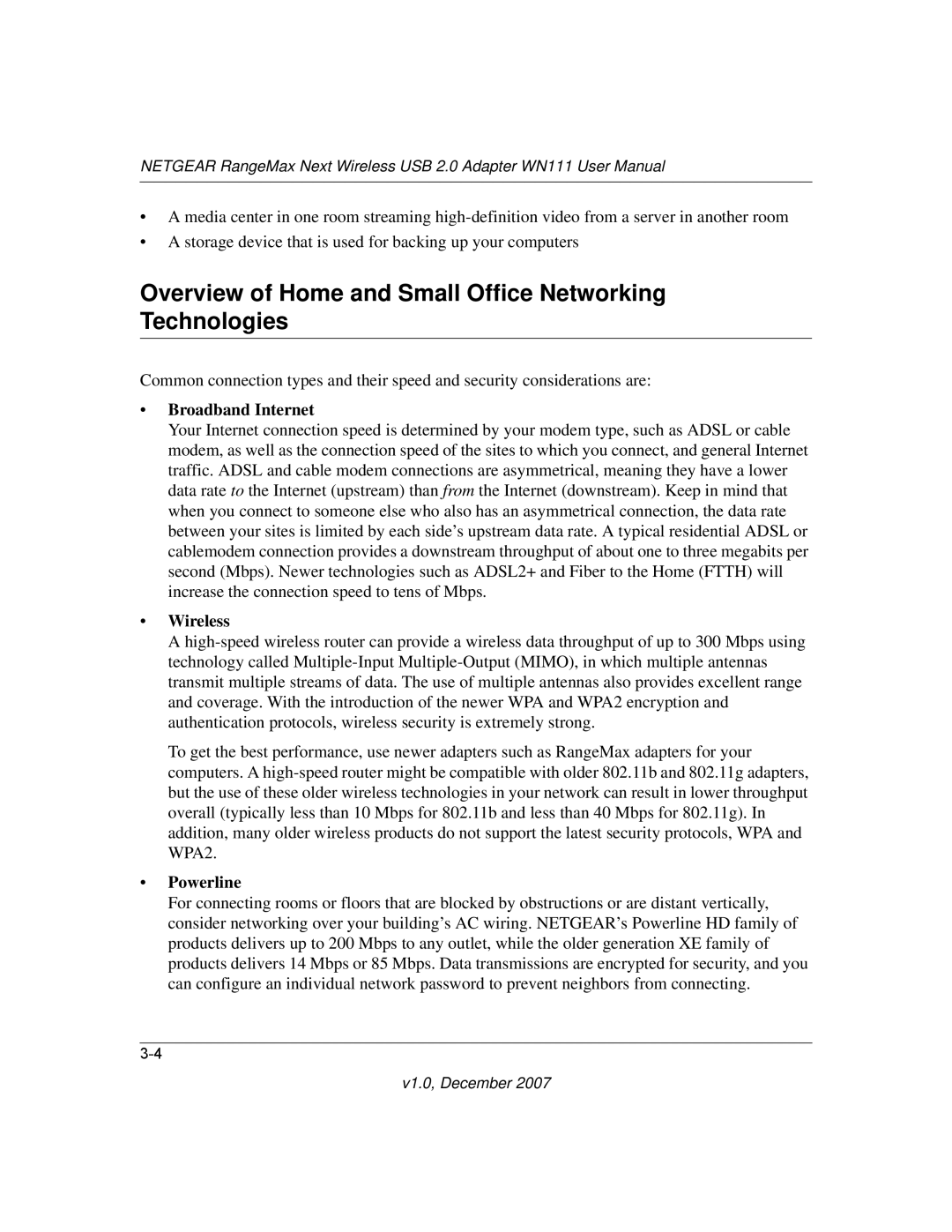
NETGEAR RangeMax Next Wireless USB 2.0 Adapter WN111 User Manual
•A media center in one room streaming
•A storage device that is used for backing up your computers
Overview of Home and Small Office Networking Technologies
Common connection types and their speed and security considerations are:
•Broadband Internet
Your Internet connection speed is determined by your modem type, such as ADSL or cable modem, as well as the connection speed of the sites to which you connect, and general Internet traffic. ADSL and cable modem connections are asymmetrical, meaning they have a lower data rate to the Internet (upstream) than from the Internet (downstream). Keep in mind that when you connect to someone else who also has an asymmetrical connection, the data rate between your sites is limited by each side’s upstream data rate. A typical residential ADSL or cablemodem connection provides a downstream throughput of about one to three megabits per second (Mbps). Newer technologies such as ADSL2+ and Fiber to the Home (FTTH) will increase the connection speed to tens of Mbps.
•Wireless
A
To get the best performance, use newer adapters such as RangeMax adapters for your computers. A
•Powerline
For connecting rooms or floors that are blocked by obstructions or are distant vertically, consider networking over your building’s AC wiring. NETGEAR’s Powerline HD family of products delivers up to 200 Mbps to any outlet, while the older generation XE family of products delivers 14 Mbps or 85 Mbps. Data transmissions are encrypted for security, and you can configure an individual network password to prevent neighbors from connecting.
